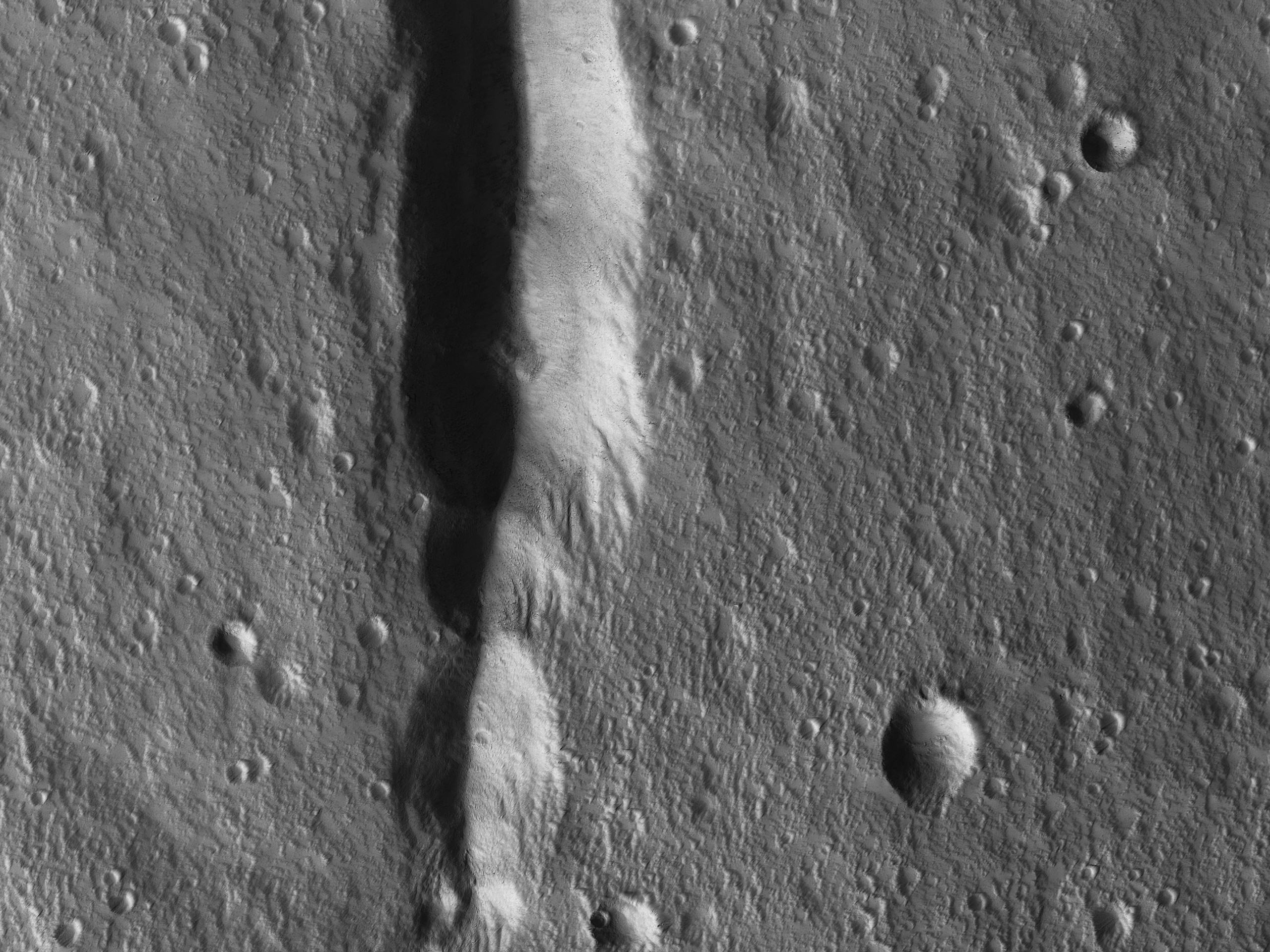NASA's HiRISE camera captures unexpected feature on colossal volcano on Mars

NASA's High-Resolution Imaging Science Experiment (HiRISE) camera shows a clear and detailed view of the summit of the colossal volcano Elysium Mons on Mars. This view, captured during the 2018 Mars dust storm, has uncovered intriguing features on the Martian surface, shedding light on the planet's geological history.
HiRISE captured the western rim and floor of the caldera of Elysium Mons, along with a distinctive chain of pits, known as a "catena," extending northward from the caldera. The chain of pits was likely formed by volcanic processes or by a tectonic process.
One unexpected feature within this catena is the presence of avalanches in two of the pits. According to the HiRISE team, the flows in these pits could be ancient, possibly dating back to the catena's formation. The prevailing hypothesis is that these avalanches might be more recent, occurring due to the collapse of steep dust deposits.
HiPOD: The Pits of Elysium MonsAn unexpected feature of this catena is the presence of avalanches in two of the pits. The flows in both pits could be ancient, produced during the formation of the catena, https://t.co/0U0j10A8AzNASA/JPL-Caltech/UArizona#Mars #science #NASA pic.twitter.com/pOzY1sc8Xv
— HiRISE: Beautiful Mars (NASA) (@HiRISE) December 30, 2023
The HiRISE camera aboard NASA's Mars Reconnaissance Orbiter (MRO) is an indispensable instrument for scientists, offering unprecedented views of the Martian surface and contributing to our understanding of the Red Planet.
Since it arrived at Mars in 2006, HiRISE has been imaging Martian features in unprecedented detail, thanks to its high-resolution capability (imaging up to 30 centimeters per pixel). Additionally, it is a crucial tool for helping to select landing sites for robotic and future human exploration.
- READ MORE ON:
- NASA HiRISE
- Mars volcano
- NASA
- HiRISE










